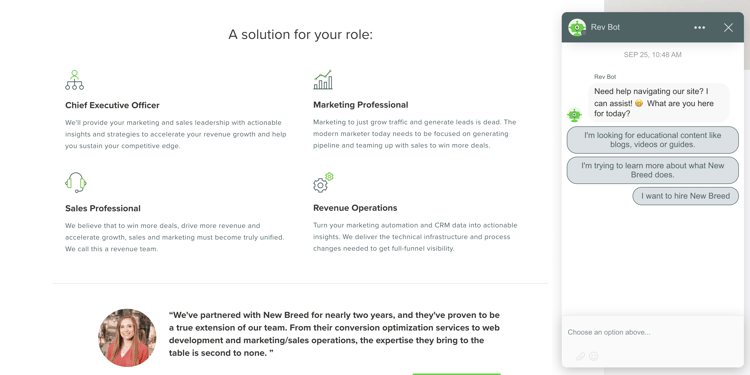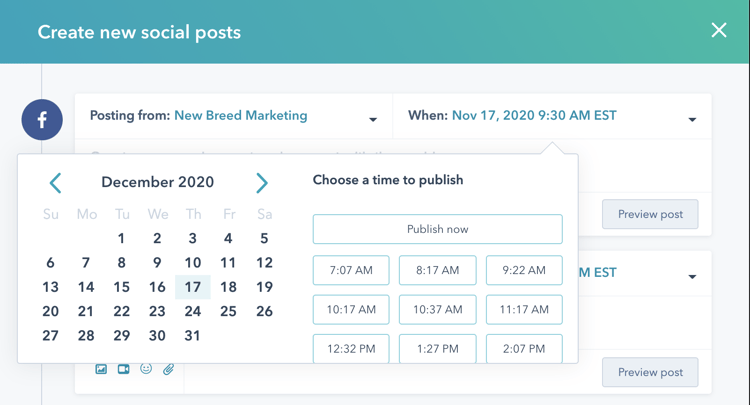How Inbound Marketing Teams Can Use Automation To Be More Efficient
Inbound marketing offers distinct challenges in the B2B world. Where its B2C counterpart can focus more on attention-grabbing spectacle and scattershot framing to attract as many people as possible (with the intention of sorting them later), inbound B2B marketing must cater to niche targets: not only businesses managers and owners, but specifically those in relevant industries.
This presents a major practical challenge for everything from content creation to social media engagement. With B2B prospects being harder to win over and markedly less likely to respond positively to outbound marketing, inbound marketing teams are under extreme pressure to get results. This can lead to frustration, disappointment, and even burnout.
So how can modern B2B businesses conduct inbound marketing efficiently and sustainably? Well, the answer — as is often the case when it comes to efficiency — is automation.
Draw Upon Templates and Integrations to Save Time
There are so many strong tactics involved in modern digital marketing, regardless of the approach taken. There are websites to be developed, articles to be written, prospects to be researched and immense ranges of administrative tasks. And for each of these things, there are tasks that can be readily automated through tools such as templates and integrations.
Templates are straightforward and familiar: even when creating a landing page for a tent pole B2B service (i.e. a service that you want to define and represent your business), it isn’t necessary to start with a blank layout and painstakingly craft the elements. A marketer can simply choose an existing design and tweak it at their leisure. And while the template might not have been automated, the tweaking process in a CMS usually is. Change a few options and see the entire page change accordingly — no in-depth manual editing required.
As for integrations, they’re immensely helpful when planning operational processes. Bringing the elements of modern marketing together isn’t always easy. What if there’s a need to link an action on Twitter to an action on a website? A marketer can define that process and have someone execute it manually, or they can use a general-purpose automation tool capable of integrating with many online systems to execute that process automatically.
Set Up Chatbots to Expand Upon Marketing Points
It’s entirely typical for B2B marketing materials to focus on technical elements and features with demonstrable impact. After all, B2B purchases and contracts tend to be orders of magnitude larger and more costly than their B2C equivalents, so those in charge of making the decisions must consider things extremely carefully.
When a regular consumer buys something and ends up regretting it, it isn’t a massive problem. But when a business owner reaches a huge agreement that they subsequently wish they hadn’t, it can result in a huge amount of stress and worry. Before they commit, then, they need to be fully convinced that they’re making a sensible decision.

This typically comes down to explaining and expanding upon whichever marketing points brought them to the table in the first place — and doing that manually is a slow process. Using chatbots, though, it’s possible to disseminate huge amounts of relevant information in a conversational fashion that adequately mimics the digestible nature of human chat.
Provided it uses a suitable chatbot platform, comprehensively covers the expected queries and uses prospect data appropriately, a marketing team can offer personalized conversations 24/7: anyone can stop by and get a fleshed-out explanation of any given feature while having at least some aspects of their identity acknowledged. This is a huge boon.
Implement Monitoring Tools to Ensure Optimal Site Performance
When you lean heavily on inbound marketing, you need to get your house in order — and in the online world, that means having a finely-honed website. Doing anything less constitutes an immense waste of effort and potential. Why try so hard to convince people to visit your site only to give the distinct impression that it isn’t worth their time?
And this isn’t just about the content of a website. It’s also about the performance, which is something that has only become more important over the years. It wasn’t a huge deal when waiting ten seconds for a website to load wasn’t particularly unusual, but today’s internet users are relatively spoiled — they’re used to pages loading almost instantly.
Now, a marketer can check the speed of their website through frequent manual reviews. That’s certainly an option. Alternatively, though, they can use an automated SEO tool to provide this monitoring. Leaning on such a tool allows a marketing team to focus on its regular marketing work and feel confident that any emergent speed issues will be promptly flagged up so it can address them (something that’s vital for user experience and SERP rankings).
Schedule Social Media Content to Ensure Consistent Activity
Content marketing is surely the biggest part of inbound marketing. Whether they’re creating informative infographics to establish expertise and tempt visits or producing in-depth guides to draw people in for utilitarian reasons, marketing teams must commit a lot of their time to distributing high-quality resources.
This distribution process is also a challenge, though: simply having great content won’t help you if you no one knows (or cares) about it. And given the dominance of social media channels such as Facebook and Twitter, the smart use of social media marketing is mission-critical. But consider the intensity and pace of social media traffic: it’s far from easy to succeed there.

If someone wants to get noticed, they need to post very often, because the average post will only seem new for a matter of seconds before it’s buried under a pile of newer posts. Tools for the automation of social media posting can make this process much easier. It’s still necessary to compose the posts manually (well, most of them, at least), but not to actually post them.
This means a marketing team leader can define a content calendar, write almost all of the social media posts in one fell swoop and schedule them to be posted (and reposted) at appropriate times. No further effort needed. Instead of wasting their time adding images and checking hashtags, employees can focus on more creative and valuable tasks.
The Takeaway
Inbound marketing isn’t markedly less hectic than outbound marketing when you factor in all the hard work required to make the most of it, so efficiency is vitally important. Implementing automation wherever possible can help with this — and in this post, we’ve covered some of the key ways in which this can be done.
Some of these tasks will be significantly harder than others, of course. Monitoring tools can be rolled out with minimal effort, though the analysis itself will require some learning. Social media scheduling is similarly easy given a little forethought. Templates and chatbots, though, take time and effort to craft, which is why they’re relatively rare.
It ultimately comes down to a simple cost-benefit analysis. With an upfront commitment of time and money to the creation of automated sequences, can you save at least that much time and money in the long run through improved efficiency? And you’ll surely find that the answer to that question is a resounding yes.
Elliot Mark
Elliot Mark is an ecommerce writer with several years’ experience working with the biggest online store builders around. Skilled in content and marketing, he loves to share his knowledge with like-minded ecommerce entrepreneurs. Read his articles on Ecommerce.





